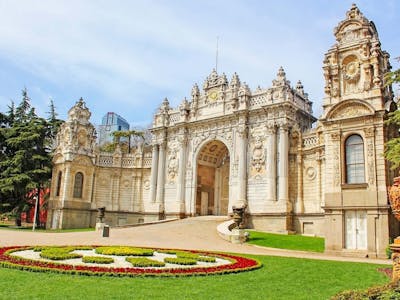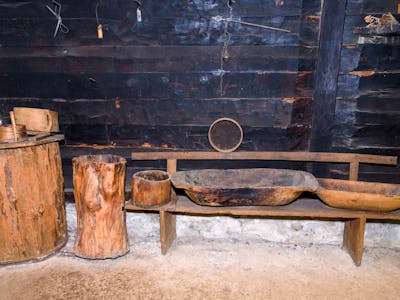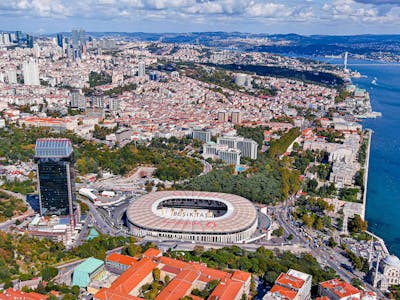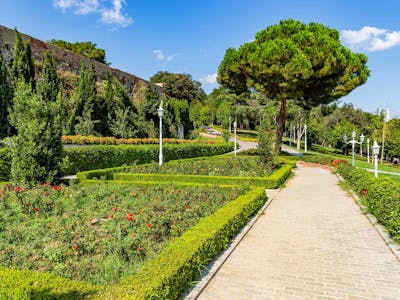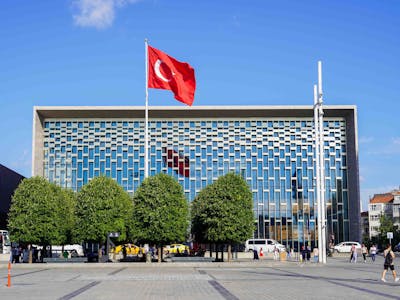One of the most well-liked tourist destinations in Istanbul, Turkey, is the Dolmabahce Palace. The Ottoman sultans lived in the palace, which was constructed in the 19th century, as their main residence for close to fifty years. It is now accessible to the public as a museum. Discover the history of the Ottoman Empire while touring the opulent chambers and gardens. If you have an interest in history or architecture, the palace is a noteworthy example of both Islamic and Western architecture. It is best to arrive early because there are frequently long lineups to enter the palace. Before travelling to Turkey, make sure to read this Dolmabahce Palace tour guide.
Essential Information for Visiting Dolmabahce Palace
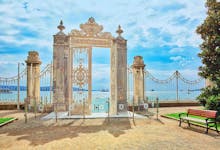
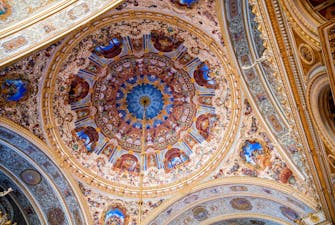
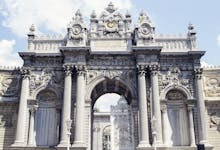
Handy information
| ⏰ Suggested Duration: | 2 hours |
| ☀️ Best Time to Visit: | 10 am to 2 pm |
| 💜 Must See: | Harem |
| 🎟️ Dolmabahce Palace Tickets: | €30.04 |
Must-see
State Rooms (Selamlık)
Ceremonial Hall (Muayede Salonu)
The gates (Treasury Gate and Imperial Gate)
Harem
Museum of Palace Collections
Things to know
Number of visitors per year: 1 million
UNESCO World Heritage Site designation: 1984
Established: 1842
Architect: Sultan Abdulmecid
Architectural style: Baroque
Opening Hours And Address
Open daily from 9:00 a.m. to 6:00 p.m., except on Mondays
Address : Vişnezade Mahallesi Dolmabahçe Cd 34357/Istanbul
Get Directions
Why You Must Visit Dolmabahce Palace
Dolmabahce Palace is much more than first impressions might suggest. The design of the palace departs from the traditional Ottoman architecture that had been used for the majority of its history up to that point and is largely influenced by Islamic architecture with some Byzantine influences.
Istanbul's top tourist destination is the Dolmabahce Palace. Anyone travelling to the city should go there. The trips are valuable since they are not only engaging but also instructive. Visitors can learn many fascinating details about the palace from the staff. A Dolmabahce Palace trip is worthwhile because it provides many unique experiences, including breath-taking architecture, fascinating history, and spectacular natural beauty. These tours are extremelt affordable, and the best way to book them is online. . These excursions also include an audio guide and last for roughly an hour.
Dolmabahce Palace Tickets
There are various Dolmabahce Palace tickets available here. You can choose to skip the line with priority access with the guided tour or even experience a full day tour of Istanbul and explore the major attractions. Headout also offers the Istanbul Tourist Pass through which you can avail most of the services and have fun exploring the famous landmarks!
Dolmabahce Palace's History
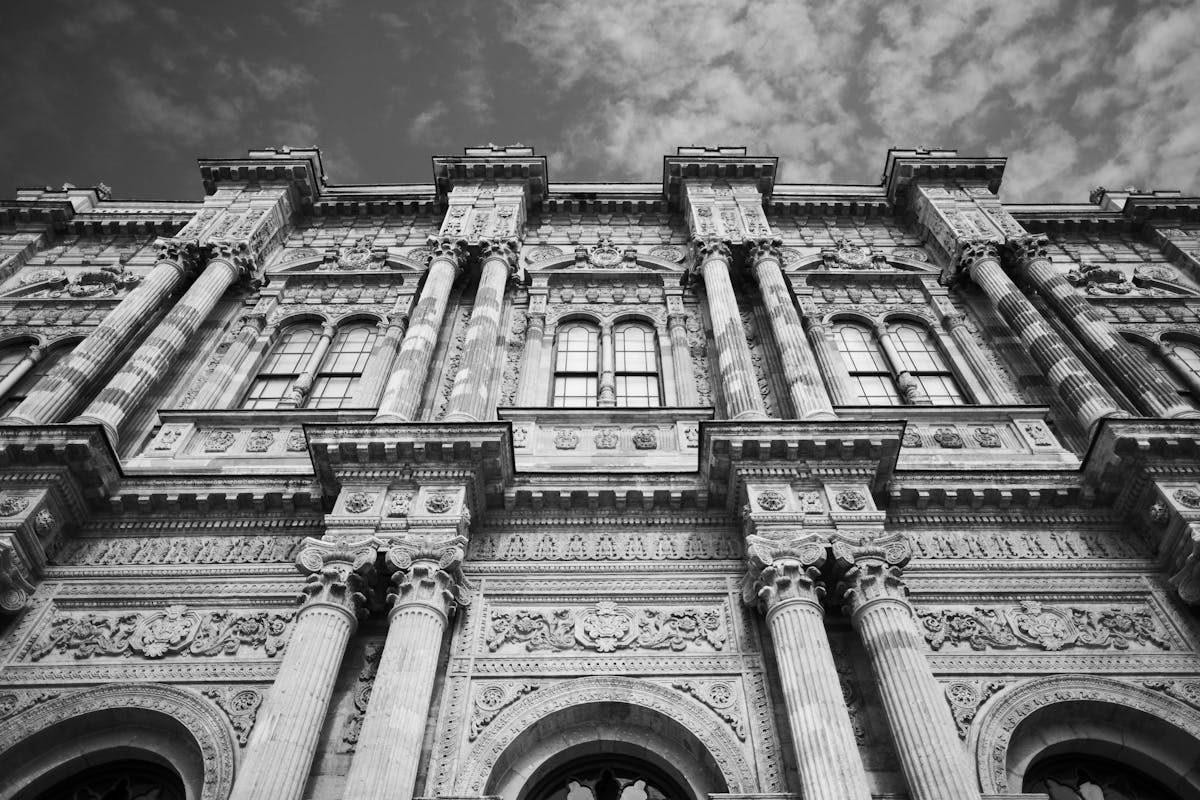
Dolmabahce Palace was constructed in 1842 by Sultan Abdulmecit I and finished in 1853. Starting in 1856, it served as the Ottoman Empire's administrative centre and Sultan Abdulmecit's residence. Sultan and his family had previously resided at the historic Topkapi Palace, but they desired a more opulent and contemporary home.
Except for a 20-year period starting in 1889 when the seat was shifted to Yildiz Palace, the Dolmabahce Palace would continue to serve as the royal residence until 1922. Dolmabahce Palace maintained its stature even after the Turkish Republic was established. Mustafa Kemal Ataturk, the country's first president, lived in the palace and passed away there on November 10, 1938. Ataturk built a centre for the national, historic, and linguistic functioning of the new country and welcomed foreign guests.
Dolmabahce Palace is certainly something to witness with its magnificent size and style, both in its colorful interiors and ornate neoclassical exterior. One of the palace's most remarkable rooms is the sumptuous Throne Hall, which Queen Victoria gifted with an exquisite chandelier. The crystal staircase's extravagant chandeliers also give away the palace's high cost, which actually led the Sultan to devalue the state's currency.
Spending several hours exploring the Dolmabahce Palace and its surroundings is highly recommended. There are also places that resemble museums where you can learn about the history of the structure.
Dolmabahce Palace's Unique Architecture
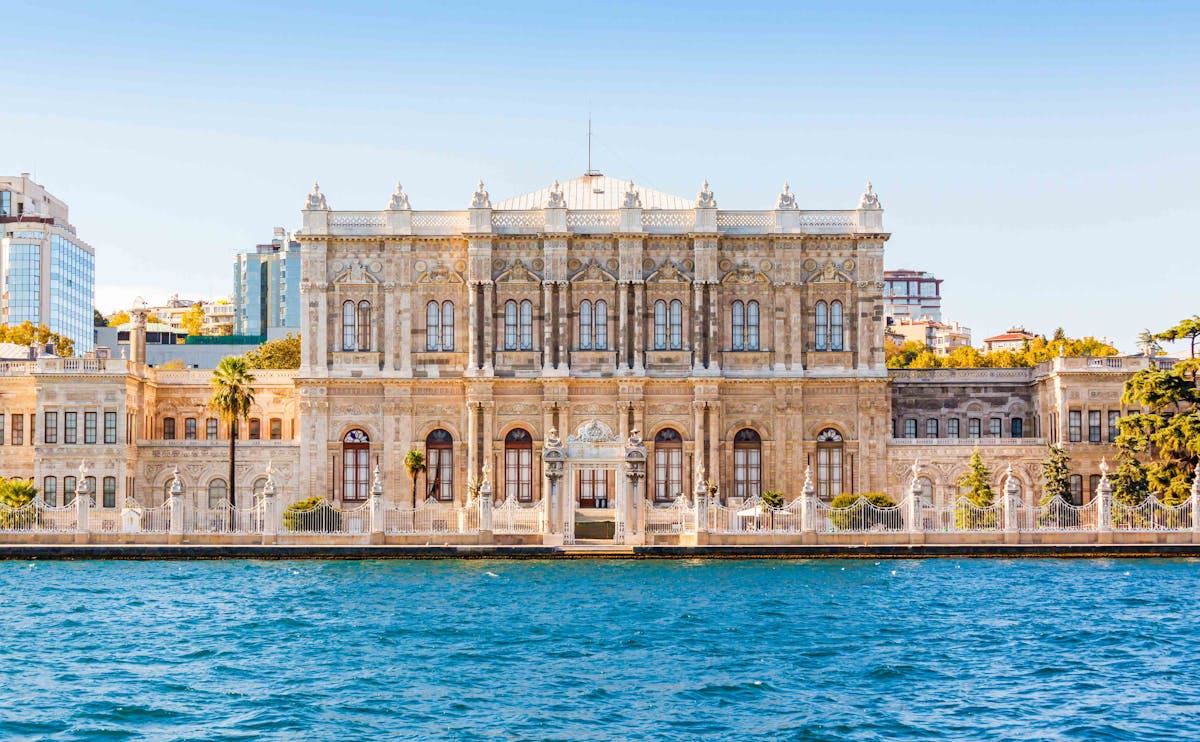
The Dolmabahce, Turkey's largest palace, is proudly displayed on Turkish soil. Garabet Balyan, an architect, constructed the Dolmabahce Palace between 1843 and 1856 to replace the Ottoman Royal family's Topkapi Palace with a more contemporary structure. Up until 1924, the last of the Ottoman Empire's six sultans resided in this palace, which was then given to the fledgling Republic of Turkey. The Dolmabahce served as the presidential palace for the country's founder, Kemal Atatürk.
The Palace, which features its original furnishings with a tinge of western influence, is a contemporary reflection of Turkish culture.
The palace's architecture is divided into three main parts: the Ceremonial Hall, the area where only official government meetings would take place, and the Sultan's Harem. This fascinating palace is filled with stunning staircases, stunning chandeliers, and a crystal glass piano. The Dolmabahce Tower, the giant clock that can be seen outside the Dolmabahce Palace Istanbul, is one of the most well-known attractions.
The project included participation from the leading architects of the day, and the finished product astounds visitors. The Selamlik, used for governmental affairs, the Harem, used for the sultan and his family's private life, and the ceremonial chambers make up the palace's structure, one of its most distinctive features. Its Neo-Baroque design, which was directly influenced by Versailles, combines with Renaissance and Neoclassical features while erasing all signs of Eastern influences.
A towering Clock Tower stands in front of the welcoming ornate gates at the entrance outside the Dolmabahce Palace. The enticing crystal chandeliers and stairs are what give the royal residence its architectural beauty. These crystals are among the most unusual crystals ever discovered, and there are also several oil paintings depicting events in the illustrious empire's history.
Dolmabahce Palace Highlights
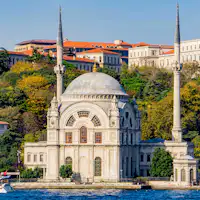
Dolmabahçe Mosque
For many years, the Dolmabahçe Mosque served as the focal point of Turkish history. Numerous important events, such as the foundation and collapse of the Ottoman Empire as well as World Wars I and II, have taken place there. A remarkable architectural masterpiece, the Dolmabahçe Mosque serves as a symbol of the Ottoman Empire.
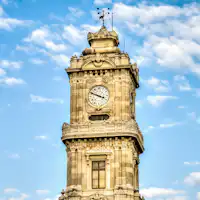
Clock Tower
One of the most recognizable landmarks in Istanbul is the clock tower of Dolmabahce Palace. Abdülhamid II constructed it, making it a prime example of Ottoman design. The four windows on each face of the Clock Tower were placed so that the sun would shine through them and act as a sundial. A spiral stairway in the clock tower leads to the roof, where four additional little domes can be seen from above.
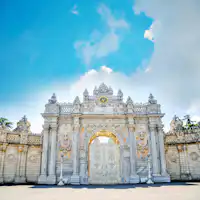
The Gates (Treasury Gate and Imperial Gate)
The palace's entry is through the Treasury Gate. A doorway called the Treasury Gate opens out to a tiny area with a fountain and four columns. It has two coats of arms and an inscription on its walls with lines from the Quran. The imperial structure, whose exquisite construction has never been seen before, is entered through the Imperial Gate.
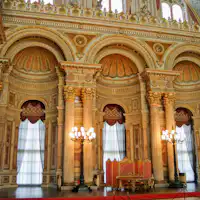
Ceremonial Hall (Muayede Salonu)
The Ottoman sultans used to host guests as well as foreign ambassadors in the Dolmabahce Palace's Ceremonial Hall. After being renovated, the hall is now open to the public for viewing. The roof has stunning architecture that provides a glimpse into Ottoman heritage and culture, and the walls are filled with artwork of Ottoman sultans and their coats of armour.
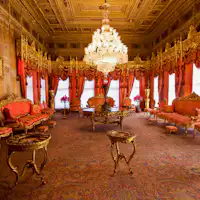
Harem
It has been referred to as "the jewel in its crown" and is one of the most well-known areas of the palace. The Harem served as a place where ladies could live and amuse males. It was a complex, not simply a single structure, with a number of buildings, gardens, as well as courtyards. In order to safeguard each area of the palace and keep it apart from the rest of the building's occupants, the harem had its own security personnel.
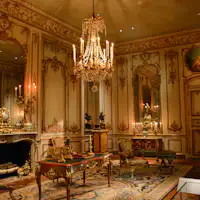
State Rooms (Selamlık)
The most significant area of the palace is the State Rooms. They are on the first floor and include a substantial collection of furniture, artwork, and decorative items. The State Rooms were created to demonstrate the Ottoman Empire's strength and display its luxury. The decor of the rooms reflects several historical eras, including Classical, Rococo, Gothic, as well as Renaissance.
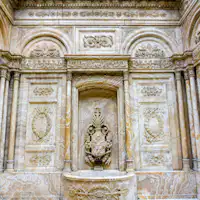
Sultan’s Bathrooms
The Sultan's facilities contain 68 toilets, 6 baths, and walls covered in a mosaic of vibrant tiles. There are also lovely arches. The Dolmabahce Palace, one of Istanbul's most well-known and significant structures, contains The Sultan's Bathrooms. They contribute to both architecture and history.
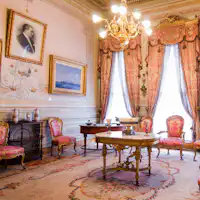
Ataturk’s Rooms
In the northern side of the palace are the Ataturk's Rooms, which Mustafa Kemal Ataturk utilised while he was a guest there during his exile. The rooms are crammed with artefacts and personal items from Ataturk's lifetime.
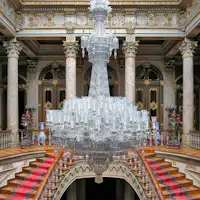
Museum of Palace Collections
The museum is located on the ground level of the palace and has four rooms that showcase a variety of artefacts from the Ottoman court. Crowns, sashes, daggers, jewels, currencies, and other items are shown. A series of Ottoman miniature artworks that have been gathered and exhibited on three walls of the museum is its main draw.
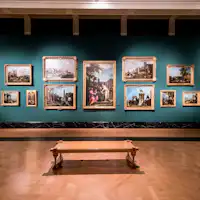
Museum of Fine Arts
A collection of around 135,000 pieces of art from all eras and civilizations may be found at the Museum of Fine Arts. The museum features a wide variety of topics, including ceramics, glassware, decorative arts, painting, and sculpture. Additionally, it includes a sizable library with more than 30,000 books on literature and the arts.
Best Time to Visit Dolmabahce Palace
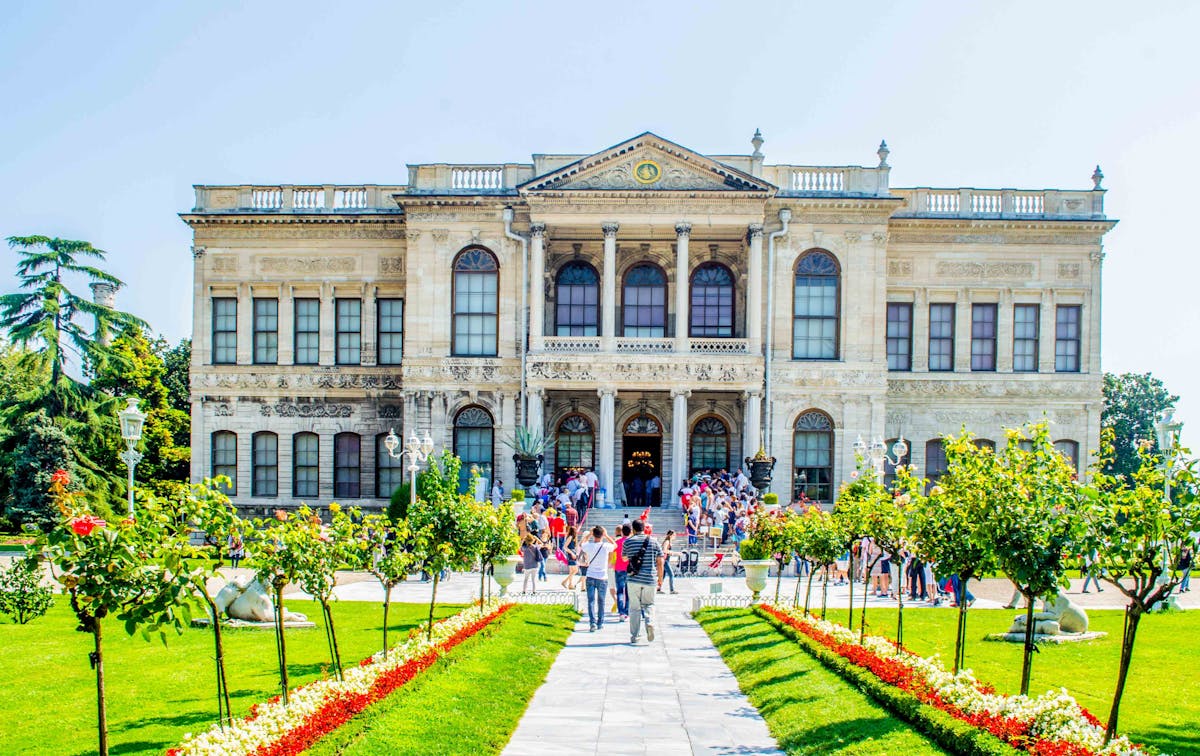
Summertime is one of the greatest times to visit Dolmabahce Palace as the temperature ranges from 18 to 35 degrees, which is perfect for most people. Early mornings are beautiful at the Dolmabahce Palace since the light illuminates the entire structure and is ideal for taking photos outdoors. It is advised that visitors arrive 20 minutes earlier than the Dolmabahce Palace opening hours in order to avoid crowds and take advantage of the lovely sunlight.
Dolmabahce Palace - Opening Hours
Dolmabahce Palace Hours
Except on Mondays, the Dolmabahce Palace is open daily from 9:00 am to 6:00 pm.
Dolmabahce Palace - How To Reach
- By Cruise:
You can take a taxi to get to the Dolmabahce Palace from the cruise terminal, which is 3 kilometres away. - By Tram:
The closest train station to the palace is Kabatas, which is a 10 minute walk to the palace. - By Taxi:
There are many taxis available to transport you directly to the Dolmabahce Palace.
Restaurants Near Dolmabahce Palace
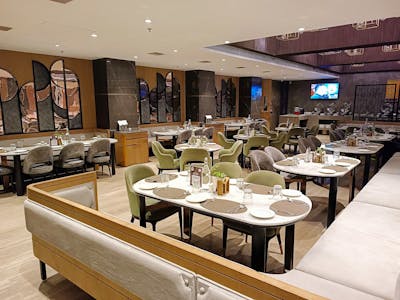
With its authentic Cantonese food, Shang Palace, Istanbul's most renowned and award-winning restaurant, brings Shangri-rich La's Asian heritage to life.The restaurant stands out for its stylish design and private dining rooms and because its six talented chefs, all native from China, create distinctive meals with dazzling Far Eastern delights.
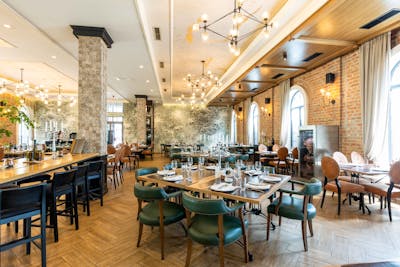
IST TOO creates Asian and Mediterranean flavours out of the best Turkish items. The stylish setting and distinctive beauty of the Bosphorus are enhanced by the inventive food. Additionally, IST TOO's "noodle stamps," Japanese sushi bar, and grill station make for the ideal supper experience.
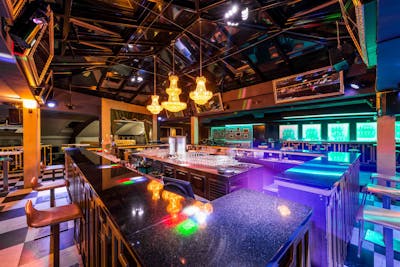
The renowned Italian lemon liqueur Limoncello lends its name to a specific location near Akaretler. Limoncello, which refreshes your palate with its unique cocktails and drinks, is in front of people who wish to live life brilliantly. You will breathe the party atmosphere to the finish with its joyful club ambiance, trendy and colourful decoration, live music evenings, DJ performances, and garden.
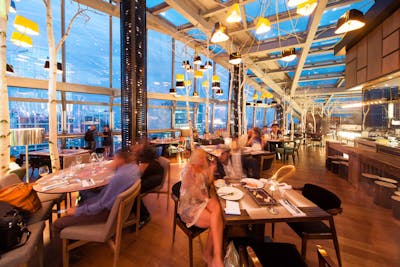
The best Turkish and Ottoman food, as well as breathtaking views of the Bosphorus, are only available at Safran, which has been recognized internationally and awarded by the "Academie Internationale de la Gastronomie." In this opulent and sophisticated location, the covered patio offers year-round access to spectacular panoramic views.
Dolmabahce Palace Facts That Will Leave You In Awe
- The Dolmabahce Palace is 45,000 square metres and comprises 285 rooms, 46 halls, 68 bathrooms, and six famous ancient Turkish baths known as the Hamam.
- A stunning 14 tons of gold make up the ceiling!
- One of the palace's most alluring attractions is the Crystal Staircase in the Medal Hall.
- With 750 lamps, the bohemian crystal chandelier is the biggest in the entire world.
- There are 600 oil paintings in the extensive collection of paintings in Dolmabahce Palace.
- There are many carpets, including rugs from Hereke Castle and those made of handwoven silk.
- Istanbul's Dolmabahce Palace was the first to use coffee tables.
- The hour of Mustafa Kemal Ataturk's death represents a tragic day in the history of the Republic of Turkey, and all clocks in his room are stopped at 09:05 AM.
Insider Tips for Visiting Dolmabahce Palace
The Dolmabahce Palace is a worthwhile stop even though it is one of Istanbul's more recent additions to the city's roster of tourist destinations. The palace, which is situated on the city's European side, was constructed in the 19th century and housed the Ottoman sultans until the early 20th century. It provides a look into the lavish lifestyle of the Imperial court and is accessible to the general public. Here are some suggestions for getting the most out of your trip:
- Pre-purchase your tickets. Expect crowds at the Dolmabahce Palace because it's one of Istanbul's most visited sights. You may avoid standing in line at the box office by ordering your tickets online.
- Give yourself plenty of time to visit. Take your time looking about the palace because there is a lot to see. To avoid the busiest times of day, try to visit during off-peak hours.
- Wear comfortable attire. The palace is huge and has multiple storeys, yet there is no dress code there. To comfortably explore all of its crevices, put on suitable shoes and attire.
- While there are restrooms outside the palace, there are none inside.
- Although there isn't food offered within the museum, you can eat nearby and experience the unique flavors of Turkey.
- For a Dolmabahce Palace tour that lasts the entire morning, make sure to get there early and start early.
- Pack minimally so that you may take advantage of visits to surrounding attractions near Dolmabahce Palace.
- Taking photos within the Selamlik and Harem is not allowed.
Things To Do Around Dolmabahce Palace
Freaquently Asked Questions About Dolmabahce Palace
When it is available to guests, the best time to visit Dolmabahce Palace is during the day. Try visiting before sunset or after sunrise if you want to take in all of its splendour.Istanbul is best visited between September and November, as well as from March through May., when the weather is temperate and ideal for a palace tour.
Except on Mondays, the Dolmabahce Palace is open to guests seven days a week from 9:00 PM to 4:00 AM.
The Dolmabahçe Palace offers a wealth of experiences, and there are times when the captivating old artefacts and sculptures take one's breath away. When accompanied by a guide or audio tour, a 1-hour tour of the Dolmabahçe Palace will be sufficient. If not, it would take guests at least two to three hours to explore the palace.
Yes, tourists are allowed to take photos of the magnificent architecture of the Ottoman Empire. However, there are other places, such as the Selamlik and Harem, where taking photos is forbidden and visitors must wear plastic shoe covers.
The palace contains many courtyards, a walled inner garden, and is bordered by gardens. The Hagia Sophia Museum, the Topkapi Palace Museum, and a stroll throughout Istanbul's Grand Bazaar are just a few of the activities you can do near the Dolmabahce Palace.


